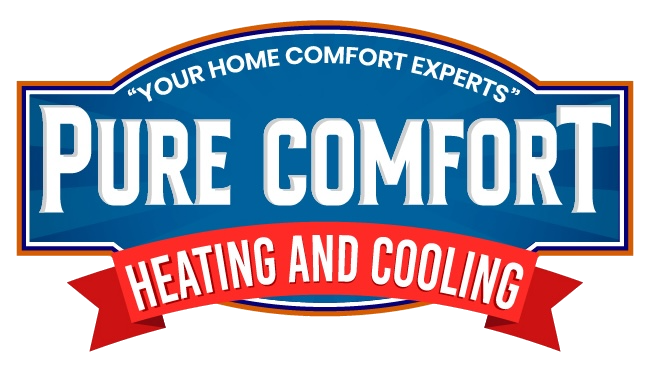
Where you aware that more than 50% of your home’s energy costs are needed for your heating and cooling? That’s why it’s essential to maintain an energy-efficient HVAC system.
Furnace efficiency standards were last modified to an Annual Fuel Utilization Efficiency (AFUE) rating of 80% in 2015. This rating system measures how effective your furnace is at combusting natural gas into heat. An AFUE rating of 80% means your furnace will waste about 20% of the fuel it uses while creating heat.
In 2022, the Biden Administration recommended new energy-efficiency standards for residential gas furnaces that would significantly reduce emissions, save consumers money and promote sustainability.
This proposal is expected to:
- Save Americans $1.9 billion annually.
- Reduce carbon emissions by 373 million metric tons and methane emissions by 5.1 million tons over the next 25 - 30 years, the equivalent of what 61 million homes emit yearly.
Starting in 2029, the updated rule would mandate all new gas furnaces to feature AFUE ratings of 95%. This means furnaces would combust nearly 100% of the gas into usable heat.
Considering these guidelines, you might be asking yourself what does that mean for my existing furnace? As of now, next to nothing, as the proposed rule will not go into effect until 2029 at the earliest and does not affect furnaces that are already in use.
But if your furnace is nearing the end of its life and a replacement is needed in soon, highly energy-efficient furnaces are already available. Find out how these furnaces can save you money on your utility bills.
Guide to Condensing Furnaces
How Condensing Furnaces Work
A condensing furnace is a style of heating system that uses a secondary heat exchanger to collect wasted heat from the furnace's exhaust gases. This limits the amount of energy wasted, increases energy efficiency and lowers greenhouse gas emissions. It also requires less natural gas to create the same volume of heat when comparing one to other types of furnaces.
How Condensing Furnaces Differ from Non-Condensing Furnaces
The main difference between a condensing furnace and a non-condensing furnace is condensing models use a secondary heat exchanger to capture any wasted heat from its exhaust gases, while the other does not.
Expected Longevity of a Condensing Furnace
The life span of a condensing furnace will depend on the brand, model and other factors. Usually, a condensing furnace will last between 10-20 years with proper maintenance and regular service. If your heating system doesn’t have regular furnace maintenance, the equipment may not last as long.
Why Condensing Furnaces Cost More
For the most part, condensing furnaces are more cost most to install than non-condensing furnaces. This is partially for their increased efficiency and the extra components needed to capture any wasted heat from its exhaust gases. However, the extra energy savings can frequently offset the cost of purchase. So ultimately, it may be more cost efficient to consider investing in a condensing furnace.
Guide to Variable-Speed Furnaces
Variable-Speed Furnaces: What You Need to Know
A variable-speed furnace can fine-tune its fan speed to better meet the heating preferences of your home. It operates at a slower speed until it senses a drop in temperature and then ramps up to supply more heat. This [precise fan is much more efficient than standard, single-speed furnaces, as it only uses the minimum amount of energy required to heat your home, saving you money in the long run.
Many variable-speed furnaces are condensing furnaces, although some are available in non-condensing models with lower AFUE ratings. If a manufacturer wants a furnace to be classified as a condensing furnace, it must offer an AFUE rating of 90% or higher.
Do Variable-Speed Furnaces Run All the Time?
A variable-speed furnace doesn’t need to stay on all the time. Rather, it runs at different speeds according to the temperature in your Streamwood home as well as the amount of energy it needs to reach that temperature.
When sufficient energy is demanded to maintain your preferred temperature level, the furnace will increase to a higher speed to manage the higher demand. Precise fan speeds offer more efficient heating in your home while also offering quieter operation.
Guide to Two-Stage Furnaces
Two-Stage Furnaces: What They Are and How They Work
A two-stage furnace is a type of heating system that utilizes two different stages of operation — high and low. In the low stage, the furnace runs at a reduced capacity as a way to maintain the chosen temperature at your home more efficiently. During the high stage, the furnace will instead operate at full capacity to meet demands for greater heat. With a two-stage furnace, you can maintain enhanced energy efficiency and consistent temperatures throughout your home.
While two-stage furnaces are highly efficient, not all all types are condensing furnaces.
Does a Two-Stage Furnace Function All the Time?
A two-stage furnace does not stay on indefinitely. In the low stage of operation, the furnace runs at limited capacity in order to maintain a preferred temperature more efficiently within your home. When a greater demand for energy is needed to maintain the set temperature, the furnace will switch to its high stage and runs at full capacity. For this reason, two-stage furnaces are powerful enough to help reduce energy costs without operating around the clock.
Differences Between Two-Stage and Variable-Speed Furnaces
Two-stage furnaces have two stages of functionality, low and high. During the low stage, the furnace performs at reduced capacity to help uphold a desired level of comfort within your home. When a greater demand for warmth or cooling is necessary, the furnace will change over to its high stage and operate at maximum capacity.
Variable-speed furnaces, meanwhile, can function at several speeds in order to sustain a comfortable temperature at home. As such, variable-speed furnaces offer greater savings on your utility bills .
Differences Between One- and Two-Stage Furnaces
One-stage furnaces have a single stage motor and operate either at full capacity or not at all. This means that the furnace is always running in order to maintain a desired comfort level within your home.
Two-stage furnaces, on the other hand, have two stages of operation, low and high. While in the low stage, the furnace runs at reduced capacity in order to maintain the desired temperature more efficiently. When more warmth or cooling is desired, the furnace will shift to its high stage and operate at maximum capacity.
Schedule Your Furnace Installation with Pure Comfort Heating and Air Conditioning Today
It takes experience and dedication to stay up to date about furnace technology advancements. That’s why Pure Comfort Heating and Air Conditioning specialists are here to help with a no-cost, no-pressure quote for furnace installation. We’ll assess your home, your heating requirements and your budget before helping you find the best solution. Get in touch with us at 630-948-4591 to get started today!

